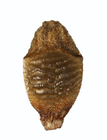Cyperaceae taxon details
Rhynchospora waytii Silva Filho & P.Weber
1792920 (urn:lsid:marinespecies.org:taxname:1792920)
accepted
Species
recent only
Da Silva Filho, P. J. S.; Weber, P.; Reginato, M. (2023). <i>Rhynchospora waytii</i> (Cyperaceae): A new species with an intriguing disjunct distribution in Brazil and Argentina. <em>Systematic Botany.</em> 48(4): 506-512., available online at https://doi.org/10.1600/036364423x17000842213597
page(s): 507 [details] Available for editors [request]
[request]
page(s): 507 [details] Available for editors
Holotype CEPEC
10738, geounit Bahia
10738, geounit Bahia
Holotype CEPEC
10738, geounit Bahia [details]
10738, geounit Bahia [details]
Description Perennial, rhizomes inconspicuous. Culms 23–7330.05–0.25 cm. Leaves flat to canaliculate 7.5–6330.07–0.25 cm,...
Etymology The name was given in honor to Dr. William Wayt Thomas (Curator Emeritus, The New York Botanical Garden), one of the most...
Description Perennial, rhizomes inconspicuous. Culms 23–7330.05–0.25 cm. Leaves flat to canaliculate 7.5–6330.07–0.25 cm, concentrated at base forming a rosette; leaf sheath 0.8–4.7 cm long. Synflorescence comprising an apical corymbodium and 2–4 axillary corymbodia, all loose, rarely subcontract, composed of partial corymbodia, and these of single spikelets or rarely fascicles of spikelets; apical corymbodium 2.5–1532.8–9 cm, the axillary one 1.7–12.532.1–5.5 cm. Spikelets 5–9mm long, lanceoloid. Glumes persistent in mature spikelet; the basal ones brown, ovate-lanceolate, chartaceous, acute-mucronate at apex, margin not hyaline; the distal ones brown, lanceolate, membranaceous, acute-mucronate at apex; usually only the basal two flowers developing achenes. Anthers 3, 2–2.3mm long. Achene 0.8–1.130.7–0.9mm, obovoid-obtrullate, greyish-stramineous to brown, the surface transversely rugose, with 6–9 lines, obtuse-truncate at apex, without a rim around the stylopodium, obtuse at base, narrowing to medium-short stipe. Stylopodium 0.3–0.630.6–0.9mm, depressed triangular, truncate concave at base, not confluent with achene, stramineous to pale brown. [details]
Etymology The name was given in honor to Dr. William Wayt Thomas (Curator Emeritus, The New York Botanical Garden), one of the most...
Etymology The name was given in honor to Dr. William Wayt Thomas (Curator Emeritus, The New York Botanical Garden), one of the most renowned sedge specialists at the present time. Wayt supervised the two first author’s PhDs [Pedro Joel Silva da Silva Filho and Philipy Weber] working with Rhynchospora, teaching us so much about Cyperaceae and being a great friend. He also leads big projects on the Atlantic Rain Forest (e.g. flora and conservation of the Atlantic Forest of northeastern Brazil; systematics of Cyperaceae, Picramiaceae, and Simaroubaceae), especially Bahia, where the type specimen was collected. [details]
Cyperaceae Working Group. (2025). [see How to cite]. Global Cyperaceae Database. Rhynchospora waytii Silva Filho & P.Weber. Accessed at: https://cyperaceae.org/aphia.php?p=taxdetails&id=1792920 on 2025-09-11
Date
action
by
![]() The webpage text is licensed under a Creative Commons
Attribution 4.0 License
The webpage text is licensed under a Creative Commons
Attribution 4.0 License
Nomenclature
original description
Da Silva Filho, P. J. S.; Weber, P.; Reginato, M. (2023). <i>Rhynchospora waytii</i> (Cyperaceae): A new species with an intriguing disjunct distribution in Brazil and Argentina. <em>Systematic Botany.</em> 48(4): 506-512., available online at https://doi.org/10.1600/036364423x17000842213597
page(s): 507 [details] Available for editors [request]
[request]
page(s): 507 [details] Available for editors
 Present
Present  Inaccurate
Inaccurate  Introduced: alien
Introduced: alien  Containing type locality
Containing type locality
Holotype CEPEC
10738, geounit Bahia [details]
10738, geounit Bahia [details]
From editor or global species database
Description Perennial, rhizomes inconspicuous. Culms 23–7330.05–0.25 cm. Leaves flat to canaliculate 7.5–6330.07–0.25 cm, concentrated at base forming a rosette; leaf sheath 0.8–4.7 cm long. Synflorescence comprising an apical corymbodium and 2–4 axillary corymbodia, all loose, rarely subcontract, composed of partial corymbodia, and these of single spikelets or rarely fascicles of spikelets; apical corymbodium 2.5–1532.8–9 cm, the axillary one 1.7–12.532.1–5.5 cm. Spikelets 5–9mm long, lanceoloid. Glumes persistent in mature spikelet; the basal ones brown, ovate-lanceolate, chartaceous, acute-mucronate at apex, margin not hyaline; the distal ones brown, lanceolate, membranaceous, acute-mucronate at apex; usually only the basal two flowers developing achenes. Anthers 3, 2–2.3mm long. Achene 0.8–1.130.7–0.9mm, obovoid-obtrullate, greyish-stramineous to brown, the surface transversely rugose, with 6–9 lines, obtuse-truncate at apex, without a rim around the stylopodium, obtuse at base, narrowing to medium-short stipe. Stylopodium 0.3–0.630.6–0.9mm, depressed triangular, truncate concave at base, not confluent with achene, stramineous to pale brown. [details]Diagnosis Species similar to Rhynchospora nanuzae Rocha & Luce~no, distinguished by being generally taller and having wider leaves (0.7–2.5 vs. 0.3–1.7 mm), rhizomes inconspicuous, more developed synflorescences and bigger spikelets (5–9 vs. 5–7mmlong) and stylopodium (0.6–0.9 vs. 0.2–0.4mm long). [details]
Etymology The name was given in honor to Dr. William Wayt Thomas (Curator Emeritus, The New York Botanical Garden), one of the most renowned sedge specialists at the present time. Wayt supervised the two first author’s PhDs [Pedro Joel Silva da Silva Filho and Philipy Weber] working with Rhynchospora, teaching us so much about Cyperaceae and being a great friend. He also leads big projects on the Atlantic Rain Forest (e.g. flora and conservation of the Atlantic Forest of northeastern Brazil; systematics of Cyperaceae, Picramiaceae, and Simaroubaceae), especially Bahia, where the type specimen was collected. [details]





